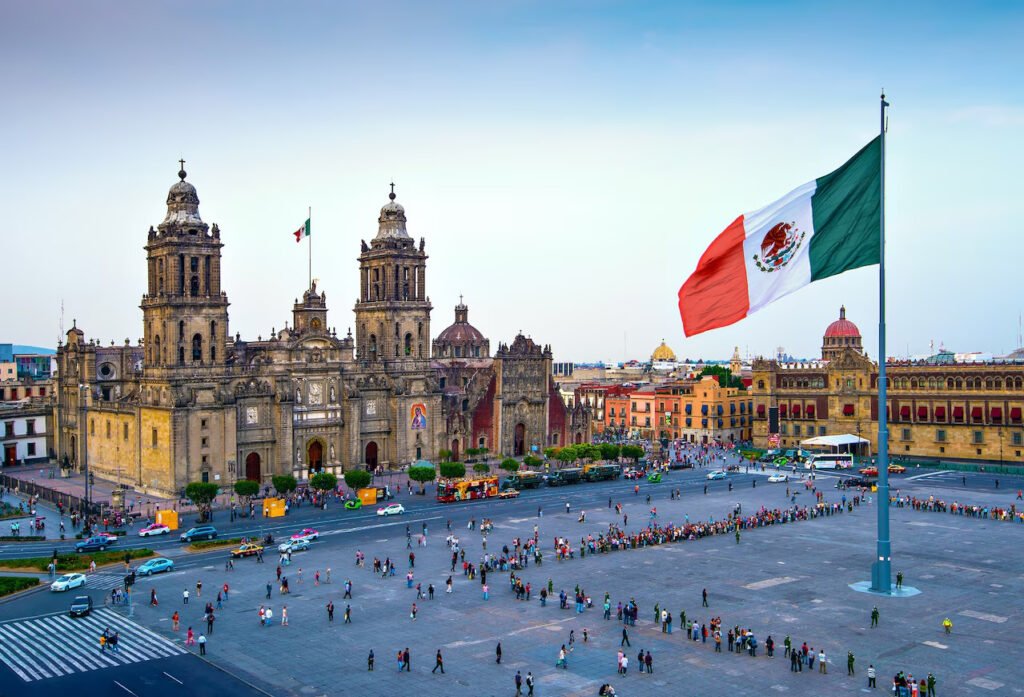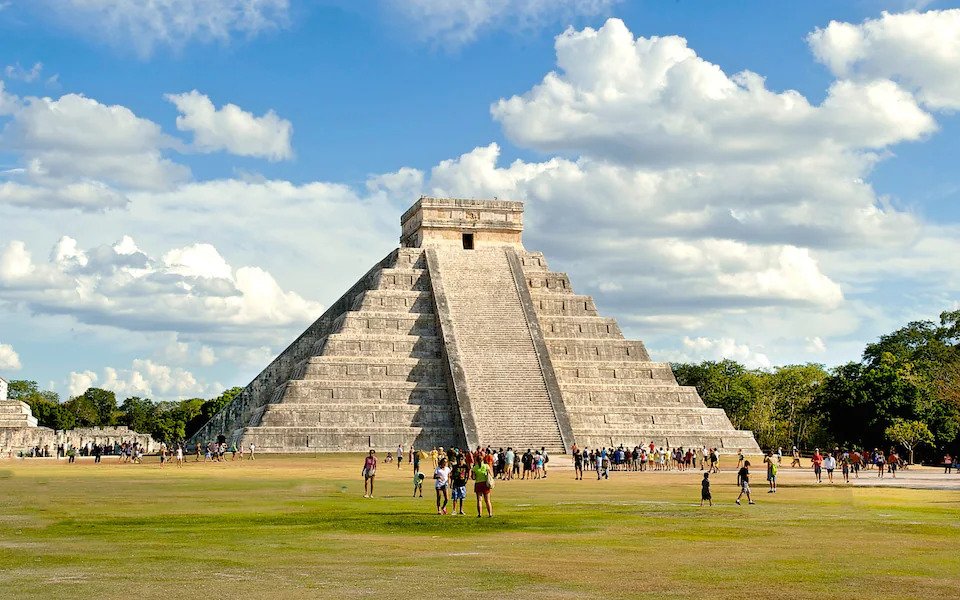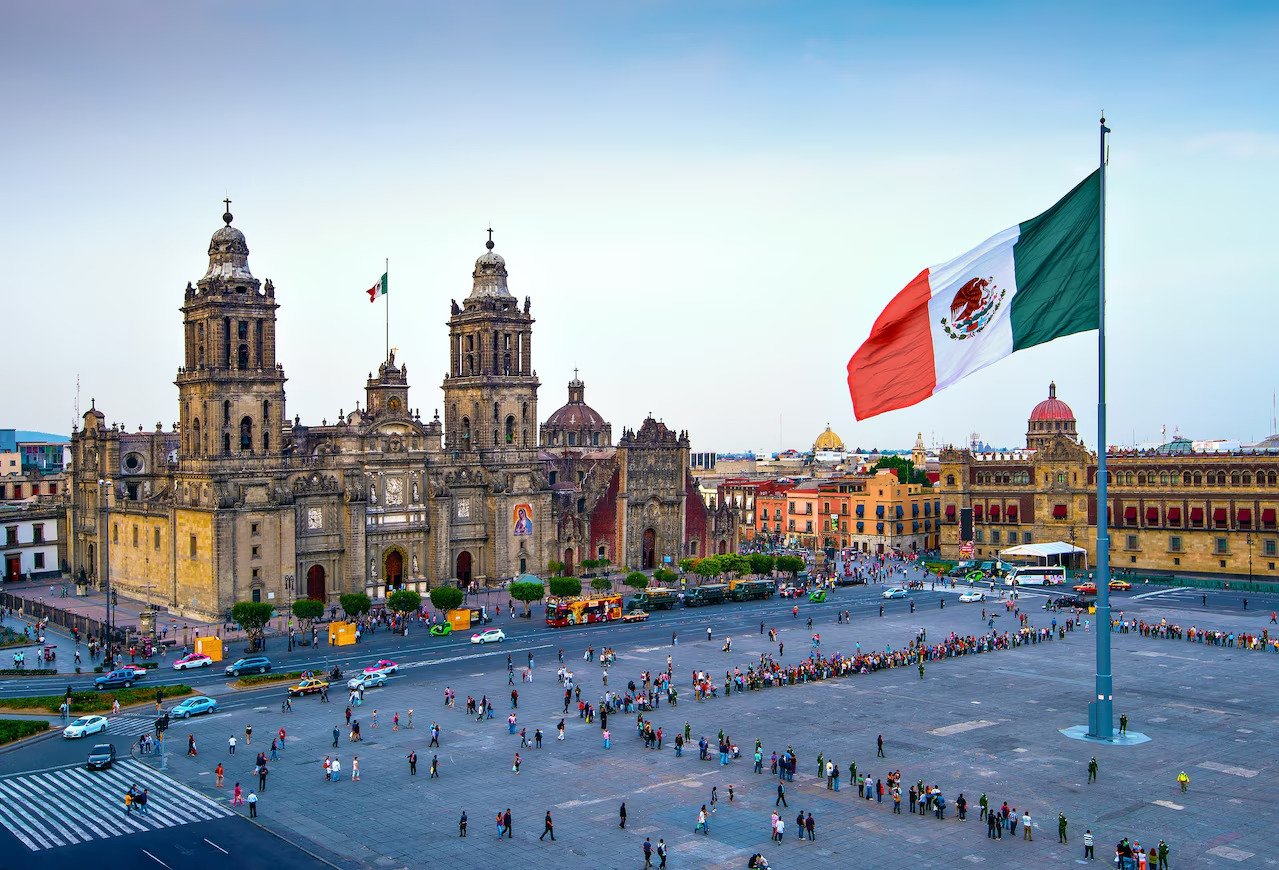Table of Contents
ToggleTop Facts about Mexico: A Journey Through History, Culture, and Geography
Mexico is one of the world’s most fascinating countries; it is a nation rich in culture, varied in terrain, and rich in history. Mexico presents a distinctive fusion of the old and new, encompassing both contemporary inventions and ancient civilizations.
Situated in the southern region of North America, is a nation renowned for its magnificent scenery, dynamic culture, and extensive history. It is the third-biggest nation in Latin America, home to more than 126 million people, and is well-known for its rich cultural legacy, which combines indigenous customs with Spanish colonial influences.

The rich tapestry of Mexican culture is fashioned from both its Spanish colonial past and indigenous heritage. The nation is well-known for its vibrant celebrations, like Día de los Muertos (Day of the Dead), when ornate altars, marigolds, and sugar skulls are used to pay tribute to departed family members. Famous for its vibrant flavors and wide variety of ingredients, Mexican food includes meals like tacos, enchiladas, and mole sauce.
Some of the most amazing ancient civilizations in history, such as the Maya and the Aztecs, originated in Mexico. Travelers from all over the world come to see the ruins of ancient towns like Teotihuacan, Chichen Itza, and Palenque because they provide a window into the rich pre-Columbian past of the nation. One of the biggest and liveliest cities in the world, Mexico City is situated on the remains of Tenochtitlan, the historic capital of the Aztecs.
Mexico has a very varied terrain, with lush jungles in the south and deserts in the north. The nation is home to some of the most stunning beaches on earth, especially on the Caribbean coast regions of Cancun and Tulum. While the Copper Canyon in Chihuahua provides breathtaking vistas that match those of the Grand Canyon, the Yucatan Peninsula is well-known for its cenotes, which are naturally occurring sinkholes filled with crystal-clear water.
This blog delves into the top facts about Mexico, exploring its history, culture, geography, and much more.
1. Ancient Civilizations and Archaeological Marvels
Several of the oldest and most developed civilizations in the world may be found in Mexico. Among the most well-known civilizations are the Olmec, Aztec, and Maya.
The Maya Civilization: Renowned for its accomplishments in writing, astronomy, and mathematics, the Maya civilization flourished from 2000 BCE to 1500 CE. One of the New Seven Wonders of the World, the city of Chichen Itza, is evidence of their mastery of architecture.
The Aztec Empire: Known for their enormous capital city, Tenochtitlan, which is now Mexico City, the Aztecs controlled central Mexico from the fourteenth to the sixteenth centuries. Even now, scholars continue to study the complex social structure and the Aztec calendar.
The Olmecs: The Olmecs flourished from approximately 1500 BCE to 400 BCE and are frequently referred to as Mesoamerica’s “mother culture”. Their enormous head sculptures, which are said to depict kings or gods, are what made them most famous.
2. The History of Mexico’s Revolution and Independence
Key periods in Mexico’s history include the country’s struggle for independence and the revolution that followed.
War of Independence: Following an 11-year conflict, Mexico won its independence from Spain in 1821. A Catholic priest named Miguel Hidalgo started the movement in 1810 with his well-known “Grito de Dolores” speech.
Mexican Revolution: The Mexican Revolution, which started in 1910, was a significant armed conflict that fundamentally changed Mexican society and politics. People like Pancho Villa and Emiliano Zapata came to represent change and resistance.
3. Traditions and Cultural Richness
Mexican festivals, artwork, music, and food are all bright examples of the country’s rich tapestry of indigenous and Spanish influences.
Dia de los Muertos (Day of the Dead): Day of the Dead, or Dia de los Muertos, is observed on November 1st and 2nd. Offerings, marigolds, and elaborately carved sugar skulls are used as symbols of respect for departed family members. It is an acknowledged cultural tradition by UNESCO.
Mexican Cuisine: Mexican cuisine is recognized as a part of humanity’s Intangible Cultural Heritage by UNESCO. Around the world, people love tacos, enchiladas, mole, and tamales. Ingredients like beans, corn, cocoa, and chili peppers have been used since prehistoric times.
Mariachi Music: Jalisco is the birthplace of this ancient Mexican music style. Usually, a group of musicians playing instruments like the violin, trumpet, and guitar while clad in charro costumes perform it.

4. Natural Wonders and Geographic Diversity
The topography of Mexico is immensely varied, encompassing everything from beaches and deserts to mountains and jungles.
The Yucatan Peninsula: Beautiful beaches, cenotes (natural sinkholes), and the Sian Ka’an Biosphere Reserve—a UNESCO World Heritage site—can all be found in the Yucatan Peninsula.
Copper Canyon: Copper Canyon is a collection of six canyons in the state of Chihuahua that are deeper and larger than the Grand Canyon in the United States. Hiking and taking in northern Mexico’s natural splendor are popular activities there.
Volcanoes: Popocatepetl and Iztaccihuatl are two of the active volcanoes in Mexico. These massive peaks provide adventurous hikers with difficult terrain and are significant in Mexican folklore.
5. Mexico City: A Global Metropolis
The largest and capital city of Mexico is Mexico City, which ranks among the world’s most populated and culturally diverse cities.
Zocalo: Mexico City’s central plaza, or Zocalo, has served as the city’s hub since the time of the Aztecs. Historic structures encircle it, such as the National Palace and the Metropolitan Cathedral.
Art and Museums: Mexico City has more museums than any other city worldwide. One of the most popular is the National Museum of Anthropology, which displays relics from precolombian Mexico.
Cultural events: Throughout the year, the city holds a number of cultural events, such as the International Cervantino Festival, which honors global arts and culture.
6. Biodiversity and Conservation Efforts
Mexico has a varied assortment of plants and animals, making it one of the world’s most biodiverse nations.
Biosphere Reserves: Mexico boasts more than forty biosphere reserves that aim to safeguard the country’s varied ecosystems. One of the most well-known is the Monarch Butterfly Biosphere Reserve, where millions of monarch butterflies travel each.
Marine Life: There is a wide variety of marine life in the Gulf of California, sometimes referred to as the Sea of Cortez. It is home to a variety of whale and dolphin species, including the vaquita, the most endangered marine mammal in the world.
Rainforests: One of the few surviving tropical rainforests in North America is the Lacandon Jungle in the state of Chiapas. Native American villages and a wide range of animals, such as howler monkeys and jaguars, call it home.
7. Mexican Art and Literature
Some of the most important people in the world have contributed to Mexico’s rich literary and cultural heritage.
Frida Kahlo: One of the most well-known Mexican artists, Frida Kahlo is praised for her works’ rich hues and nuanced emotional content, which frequently reflects the suffering and experiences of the artist herself.
Diego Rivera: Well-known for his large-scale murals depicting social and political topics, especially the sufferings of the working people, is Diego Rivera.
Octavio Paz: One of the most important writers of the 20th century, Octavio Paz is a poet and essayist who won the Nobel Prize. Existentialism and Mexican identity are two topics he addresses in his works.

8. Economic Contributions and Global Influence
Mexico’s economy, which ranks as the fifteenth largest in the world, is important to international trade and business.
NAFTA and USMCA: USMCA (United States, Mexico, Canada Agreement) supplanted NAFTA in 2020. Mexico was a founding member of NAFTA. Mexico’s manufacturing industry has benefited from these trade accords, especially in the electronics and automobile industries.
Tourism: With millions of tourists visiting its beaches, cultural landmarks, and natural wonders annually, tourism is a significant industry in Mexico. Mexico City, Los Cabos, and Cancún are among the well-liked vacation spots.
Agriculture: Mexico is a major global producer of avocados, tequila, and silver. Tequila is made from the avocado plant, which is indigenous to Mexico and has been farmed there for thousands of years.
9. Mexican Sports and Global Achievements
Mexican culture is deeply rooted in sports, with football (soccer) being the most popular sport.
Football: Mexico has a long history of participating in the FIFA World Cup with their national team. One of the biggest and most recognizable football stadiums in the world is Estadio Azteca in Mexico City.
Lucha Libre: Lucha Libre is a Mexican professional wrestling promotion that is well-known for its vibrant masks, daring moves, and captivating narratives. Both in Mexico and abroad, it has a devoted following.
Olympics: Mexico was the first nation in Latin America to host the Summer Olympics, having done so once in 1968. The Black Power salute performed by African-American medalists on the medal podium made the Games unforgettable.
10. Challenges and Future Prospects
Mexico has a bright future, but it also has its fair share of difficulties, just like any other nation.
Social Issues: Mexico is still dealing with problems like crime, inequality, and poverty. Together, the government and civil society are implementing a number of reforms and efforts to address these issues.
Environmental Concerns: Mexico faces serious environmental issues, including deforestation, pollution, and climate change. To preserve the nation’s abundant natural resources and diverse biodiversity, conservation initiatives are being carried out.
Economic Growth: In spite of obstacles, Mexico’s economy is expanding thanks to trade agreements, the country’s manufacturing sector, and tourism. Additionally, the nation is spending money on education and technology in order to get ready for new developments.
Conclusion
Mexico is a nation of opposites, where cutting-edge inventions and age-old customs coexist. It is an intriguing and complicated country because of its active economy, rich history, lively culture, and varied topography. With a bright and exciting future ahead of it, Mexico is still a major participant on the international scene as it continues to change. Mexico has plenty to offer everyone, whether it’s visiting its historic ruins, enjoying its food, or taking part in its thriving cultural scene.


